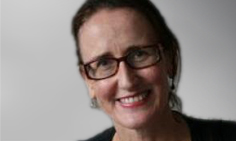WHAT’S a pharmaceutical company to do when it develops a drug that turns out not to work in its target condition and causes a range of nasty side effects?
Bin it, perhaps?
A better option might be to invent a new condition to suit the failed drug — and then paint any opposition to your product’s approval as a human rights abuse.
Obviously that’s an entirely fictional scenario, so let’s talk about hypoactive sexual desire disorder (HSDD).
The condition first appeared around a decade ago, after the huge commercial success of Viagra prompted an entirely altruistic search for a similar blockbuster to address sexual dysfunction in women.
Sadly, the various products developed to meet this need have so far failed to satisfy the demands of regulators. This is apparently due to institutionalised sexism in organisations like the US Food and Drug Administration (FDA).
That charge has been made by political leaders, various lobby groups and some doctors (check this rant, for example).
Clearly, the fact that the FDA has approved several treatments for male sexual dysfunction and none for women means it thinks female sexuality doesn’t matter. Oh, and possibly that women are incapable of making informed decisions about their own health. Or something.
It certainly couldn’t be that treatments for the apparent epidemic of HSDD have so far failed to demonstrate that they are either safe or effective.
Happily, the industry is not giving up.
A failed antidepressant called flibanserin is due to go to the FDA this year — the third attempt to gain approval for its use in HSDD.
After the flak it received from its previous rejections of the drug, the FDA seems a little anxious about what might happen this time. Its recently released briefing document diverges from the scientific evidence to explicitly deny accusations of gender bias.
If flibanserin manages to get up this time, the industry is certainly ready.
It’s been priming clinicians in the US for years through accredited continuing medical education (CME) offerings, according to a paper published in the Journal of Medical Ethics.
In 2010, the year flibanserin first came before the FDA, researchers found 14 accredited CME modules on HSDD in women, available free to clinicians online as all had financial support from the drug’s manufacturer.
Such courses have become a key marketing tool for the pharmaceutical industry, helping to establish the need for a product in clinicians’ minds before it comes on to the market, the article’s authors say.
“Marketing messages often focus on how a condition is underdiagnosed, widespread and affects quality of life, and how current treatments are absent, inadequate or problematic”, they write.
It’s hard to imagine there’d be any women who wouldn’t benefit from flibanserin, based on the HSDD courses they cited.
The woman is happy with her sex life? Maybe her partner isn’t. And anyway “women may not always be aware they have a sexual dysfunction”.
She claims not to be “distressed” (an essential prerequisite for clinical diagnosis of the disorder)? It may just be that she doesn’t like the word. See if she prefers “bothersome”.
She is highly interested in sex, but just doesn’t want it with her current partner? She may have “situational HSDD”.
Well, there’s something in need of medication.
Surely, only the most heartless of regulators could deny women the happy ending the pharmaceutical industry is so desperate to give them.
Jane McCredie is a Sydney-based science and medicine writer.

 more_vert
more_vert
Awareness campaigns for doctors and the public about conditions being under diagnosed and under treated are commonplace. This is just the most egregious example. We are reaping what we have sowed. And we point tthe finger at homeopaths for being unscientific and promoting snake oil!
Jane, thank you again for another well researched and irony laced column. A resoundng yes to all your observatons. As an aside, I read with interest and wonderment a week or so back that drug companies have finally announced (with huge fanfare) antidotes to NOACs and a desire to establish therapeutic ranges. Hold on haven’t these drugs been on the ‘market’ for about four years already? Something about ‘cart and horse’ comes to mind here. Maybe a good solid class action is in order by family members of all patients who have either bled to death or suffered major medical misadventure in the meantime from these prematurely released drugs. Pradaxa was marketed mercilessly to GPs in this country for almost a year (with free starter packs) to try to grab marketshare over its competiors prior to that toothless tiger, the TGA, allowing it onto the market without an antidote being available and with only a very limited safety profile being available the time. A quick discussion with an A&E physician (Sue) would be illuminating I’m sure.